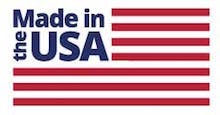There is no perfect fiber.
Unfortunately, no single performance fiber can do it all – they all have their strengths and weaknesses. On the other hand, I suppose this is fortunate for me; if there were one perfect textile fiber, my job in Research and Development would be pointless.
Therefore, when selecting which material(s) to use for a specific textile application, it is important to consider numerous factors relative to the final use/application. At OTEX, we have – over time and through years of experience – developed an in-depth process and a standard Product Development Survey, in order to identify all the vital performance needs and risks of product failure. This procedure has proven invaluable in terms of ideal fiber selection and textile construction.
It is not at all unusual for customers of specialty textile components to seek one, or some, performance criteria, and not consider others that will crucially impact the capabilities, lifespan, quality, etc. of their final product. It is for this reason that – even when a client is confident of the type/design of the textile component they are seeking, or the raw materials they believe will work best, we will still insist on taking the measured steps to confirm their suggestions. Interestingly, and to their frequent surprise and relief, we are able to highlight a previously unconsidered performance target and make suggestions to improve on their original concept.
Textile / Fiber Performance Criteria and Characteristics
In determining the right fiber and construction for a specialty narrow fabric – whether it be a webbing, elastic, trim, tape, tube, cord, or even an E-Textile, there are 3 main criteria to take into account:
- Function: This includes all of the performance and physical targets for the textile to provide as a component of its final product application. An example of this would be tensile strength in the case of webbing for load-bearing crane rigging slings. These slings are used to lift all manner of heavy loads (shipping containers, construction materials, boats, etc.), so measurable/reliable tensile strength is the most important performance feature. Other common performance requirements for specialty narrow fabrics may include:
- Elongation
- Elasticity
- Rigidity/Stiffness vs Flexibility
- Hand (softness)
- Thickness and Width
- Environment: Often confused with function, environment is a performance characteristic that considers a textile’s ability to provide function under specific contextual constraints. An example of this would be Flame Resistance in webbings used for firefighter’s SCBA (self-contained breathing apparatus) harnesses. While the flame resistance is a critical performance characteristic, the functionality criteria includes tensile strength, stiffness, and others. Common environmental performance goals may include:
- Flame Resistance
- Heat Resistance
- Cut and Abrasion Resistance
- UV Light Resistance
- Hydrophobicity
- Chemical Resistance
- Arc-flash Resistance
- Standards and Certifications: The final criteria to be considered when choosing fibers and designing construction, are the requisite standards and certifications that must be met. Since many of the specialty narrow textiles that OTEX engineers and manufactures are critical components, used in products that safeguard and/or save both life and property, it is understandable that quality and performance be assured through rigorous monitoring and testing of both incoming raw materials and outgoing finished products. Our clients demand that many standards are met and products/processes be certified. Beyond these, we hold ourselves to many of the strictest certified manufacturing protocols for our industry and those we serve. Some notable standards/certifying bodies may include:
Performance Fiber Examples
The examples listed above are just some of the many considerations that must be taken into account when designing a performance narrow fabric and the materials best suited to achieve optimal performance. At times, a single fiber will provide the best performance solution, while at other times a combination of materials is needed to cover different targets/goals. Some of the key fibers we utilize and their relative strengths and weaknesses include:
- Para Aramids (Kevlar, Twaron, Technora, etc.)
- Strengths – heat and flame resistance, tensile strength/tenacity, good abrasion resistance, arc-flash resistance
- Weaknesses – UV resistance, porous (gains weight when wet)
- Meta Aramids (Nomex)
- Strengths – heat and flame resistance, soft hand, colorfastness
- Weaknesses – relatively low tensile strength, cut & abrasion resistance, porous
- UHMWPE (ultra-high molecular weight polyethylene, or Spectra, Dyneema)
- Strengths – tensile strength/tenacity, excellent cut & abrasion resistance, hydrophobicity (non-porous), UV resistance
- Weaknesses – heat and flame resistance
- Vectran
- Strengths – moderate heat and flame resistance, tensile strength/tenacity, cut & abrasion resistance, hydrophobicity, arc-flash resistance
- Weaknesses – UV resistance
- PBI (polybenzimidazole)
- Strength – heat and flame resistance, soft hand, chemical resistance, elongation
- Weaknesses – tensile strength/tenacity, cut & abrasion resistance
While these are some of the basic features of performance fibers and the applications/environments/standards analyzed during the material selection and construction design stage, there are still many others to be considered. Continuing to learn of, and innovate, new textile product applications and capabilities is our passion. Our team of designers, engineers, and technicians never stop exploring new materials and techniques to push performance ever further. If you and/or your associates are looking to source a narrow textile product with demanding physical properties, we invite you to contact us to discuss the unique challenges of your project/program. Our Sales, R&D, and
Quality Assurance staff are happy to help you find exactly the right design for your needs. If it is not an existing product from our extensive catalogue, rest assured, nothing makes us more excited than engineering new custom textile solutions.



